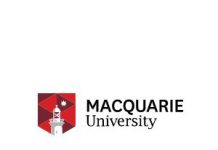How do you create the right conditions for lean to flourish? The University of Strathclyde’s John Hogg outlines five key behaviours that will help to foster a lean approach in higher education.
To be an authentic and effective lean leader, you must first understand what lean is. Fundamentally it is based on Respect for People and Continuous Improvement, and both of these need to be in place for a lean culture to thrive.
- Creating the Environment
One of, if not the, most important aspects of lean leadership is creating the right environmental conditions for lean to flourish. This requires a lean leader to consistently demonstrate a key set of behaviours.
- Creating and communicating a clear vision or purpose
An effective lean leader needs to set out a clear vision or purpose, which is aligned to the strategic goals of the team and the organisation. This purpose should also have a clear understanding about customer expectations and a recognition that these are constantly changing; with today’s delighters quickly becoming tomorrow’s expectations.
- A Commitment to self-development
As a leader, I believe that you need to have a strong commitment to self-development; always seeking to improve yourself.
I have valued visiting other organisations to find out about different lean approaches; applying this learning within my own organisation. Similarly we have welcomed a significant number of visitors to the University of Strathclyde who wish to learn about our approach.
- Coach and develop others
Lean leaders needs to coach, empower, encourage and trust people to solve problems at their own level; whilst also giving them the necessary time and space to solve problems.
- Supporting daily improvement
There are many competing factors on a leader’s time; however time needs to be set aside and protected to ‘go and see’ what is actually happening – not what you think is happening – on a daily basis. In doing this, lean leaders should:
- Listen and observe;
- Ask open-ended questions and do not immediately offer solutions when problems are identified
- Encourage and support a focus on daily improvement
- Continually challenge the status quo
- Encourage a culture of finding lessons in every ‘failure’ to facilitate and encourage improvement
Lean for leaders
At the University of Strathclyde we develop our own staff through our ILM Lean for Leaders programme. This is designed to give participants an insight into the behaviours, knowledge and skills required to be effective lean leaders. As part of this, they are also expected to undertake a lean project and to provide evidence of the benefits of the project, by applying the methodology outlined in our Guide to Evidencing the Benefits of Business Process Improvement in Higher Education. This will, in time, enable us to create a vibrant community of practice across the university, using a common continuous improvement approach and methodology.
Sector collaboration
In March 2016, the Universities of Strathclyde, Aberdeen and Stirling collaborated to deliver a Lean for Leaders Programme to participants from all three institutions. Significant benefits have been realised by each of the universities involved; and these benefits will increase further as we build our collaborative community of lean leaders. The next cohort of lean leaders will take part in the collaborative programme in March 2017.








